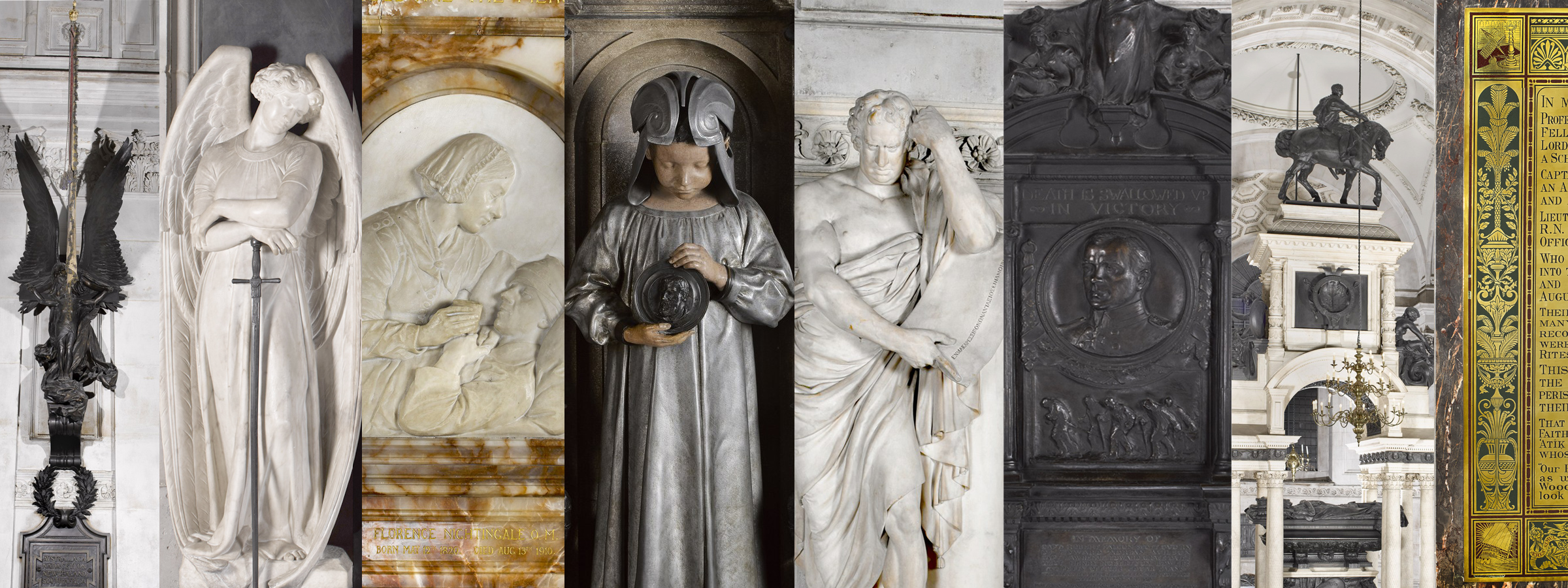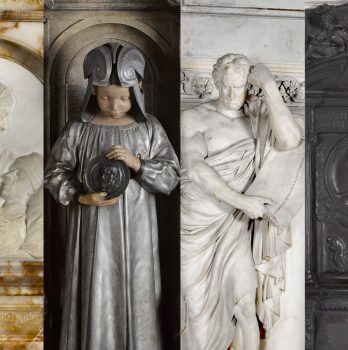‘The Mediator’: Sculptor Walter Mariga’s Response to the Monument to Melton Prior (1845–1910) by Bertha Burleigh, 1911–1912
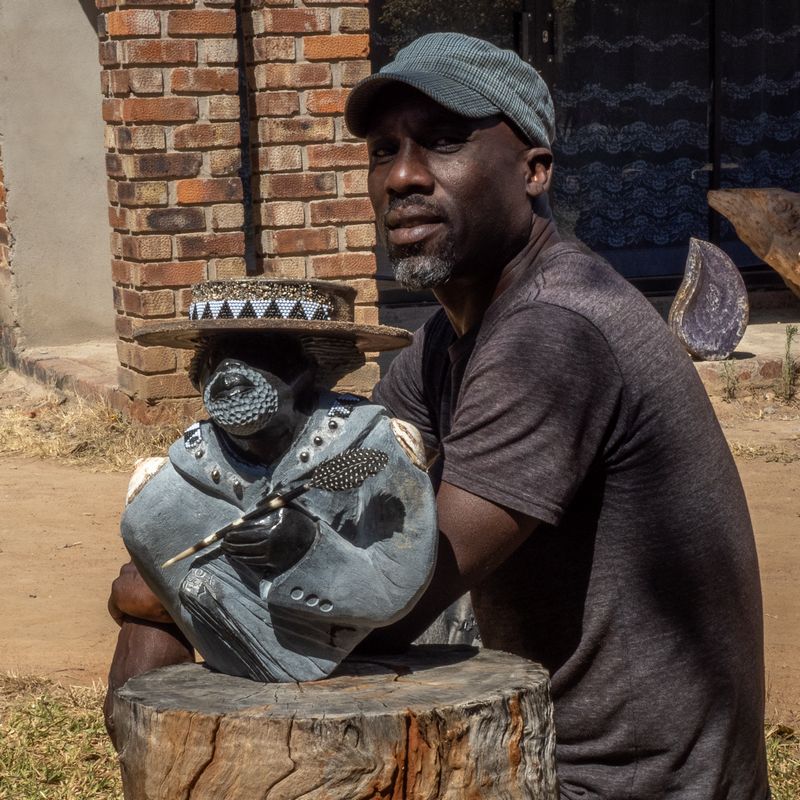
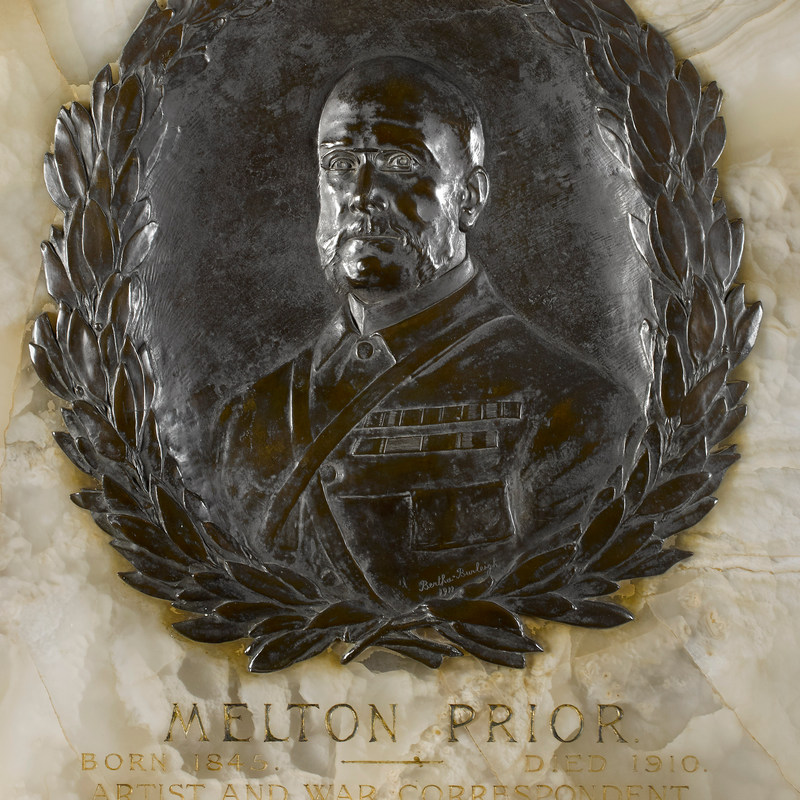
About the Artwork
The Mediator is a new sculpture by Zimbabwean artist Walter Mariga in response to the monument to Melton Prior (1845–1910), an artist and correspondent with the London Illustrated News.
Here, Mariga gives some background to his creation of the artwork and talks about the stone and other materials he used:
Hello, my name is Walter Mbiru Mariga and I’m a 49-year-old artist living in Zimbabwe, specialising in stone and wood sculpting.
As part of the 50 Monuments in 50 Voices project, my assigned monument was that of Melton Prior, the artist/war correspondent for the Illustrated London News.
His monument is displayed in St Paul’s Cathedral and it wasn’t until I started this project that I realized that Melton Prior has a connection with my native country Zimbabwe. He was in southern Africa at the end of the nineteenth century, near Bulawayo in 1896.
As an artist, like Melton Prior was, I thought I should choose him as ‘my’ monument for the project. I believe his reports did justice to the battles of the Matebele uprising. It is the report writing that can give wars direction or mislead a nation to continue fighting. Integrity in reporting will bring positive results during war, and promote peace within and between nations.
It reminds me of the story about a guy who invented a rifle for sporting activities, which later landed in the wrong hands and was used in war. The inventor died a bitter man – his effort was used wrongly.
I hope Melton Prior’s reports promoted peace within wars and didn’t inspire more wars. I hope he did his work and duties very well because one mistake would result in a bad and difficult situation. His reports during this period (war) might have changed the whole situation to bad or good.
First and foremost, the artwork was done in a more traditional way, whereby it was done mostly by hand and less using power tools. I didn’t make any preparatory sketches; it was made through imagination and meditation. I created my artwork in a simple form, so that whoever sees it will easily recognise the art concept and that it represents a statue of him, the war correspondent Melton Prior, to be seen alongside and in relation to his monument. He is shown on his monument as a man who wrote about war events and was present at the campaigns listed on his monument, and I decided to use different materials to describe him:
Walter Mariga
- Stone – springstone (hard black serpentine) from the Great Dyke, which stretches across beautiful Zimbabwe, some 500km or more across the country. The stone is hard to carve and gives a beautiful texture when worked and polished very well. It is rich in iron. The stone used was handpicked from the mountains not from a blasted quarry where machinery is used.
- Wheel disc – I discovered that Prior loved to have a beard and always wore his leather hat. I used a wheel disc to give Melton Prior a beautiful hat (meaning the disc is repurposed instead of being thrown away); and to bring out a different, brown, sandy texture on the hat, glue was applied then sand spread on top, and left to dry.
- Beads – to give his garment some distinction, I applied a black and white beaded collar, since Melton Prior visited Zimbabwe, where a culture of beads is practised: that is why I thought of putting the beads on his garment.
- Sea shells – for one to be a war correspondent, I think you need some kind of military training, so I used sea shells as shoulder pads, or badges, to differentiate him from an ordinary person.
- Porcupine quill and guinea fowl feather – symbolise the pen, since Prior was a writer; I used natural materials to suit my artwork.
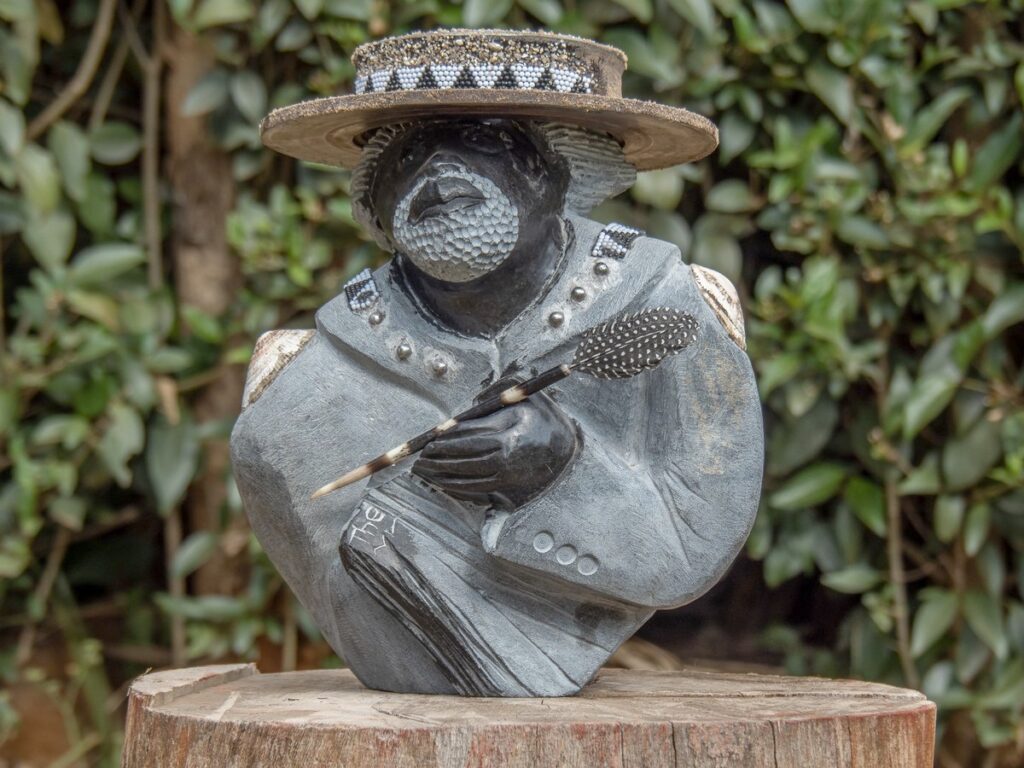
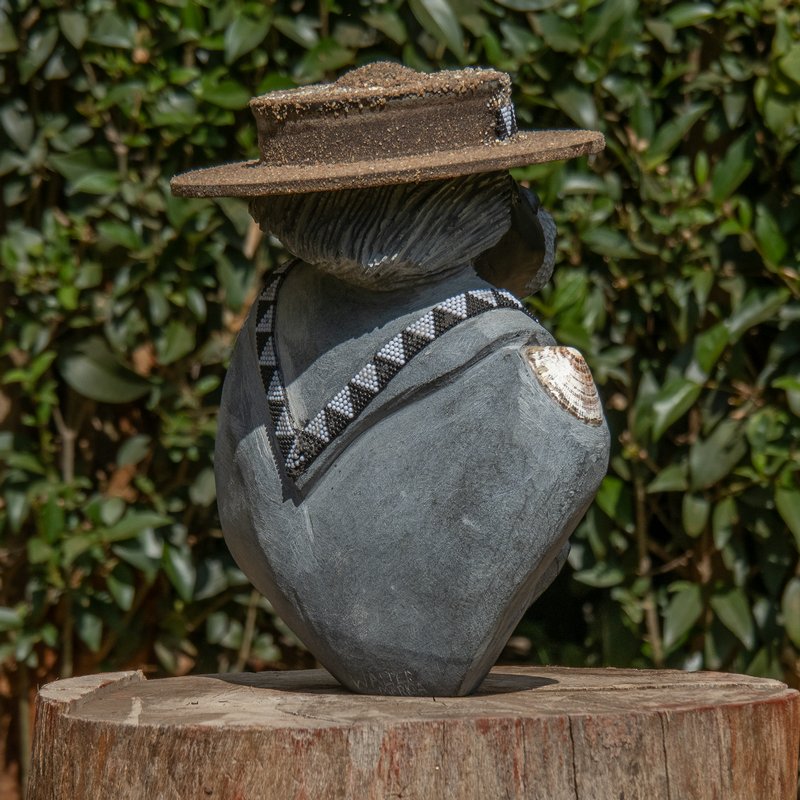
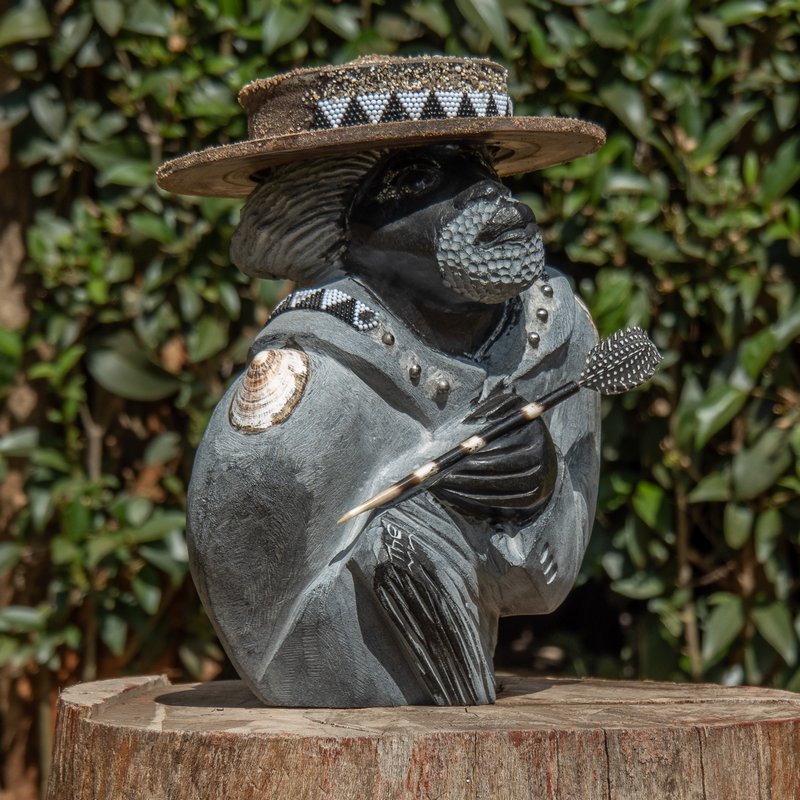
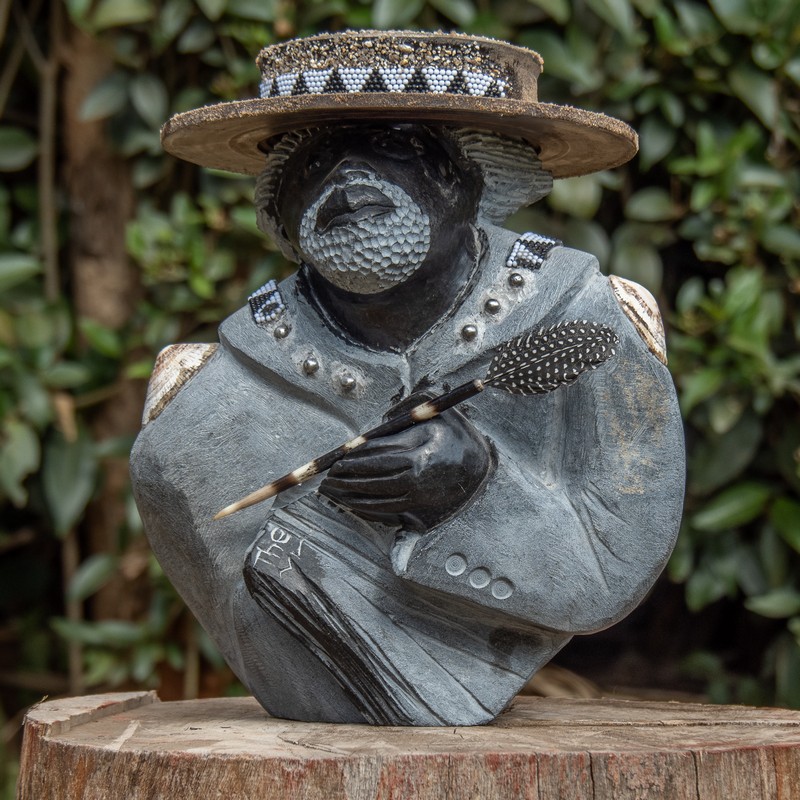
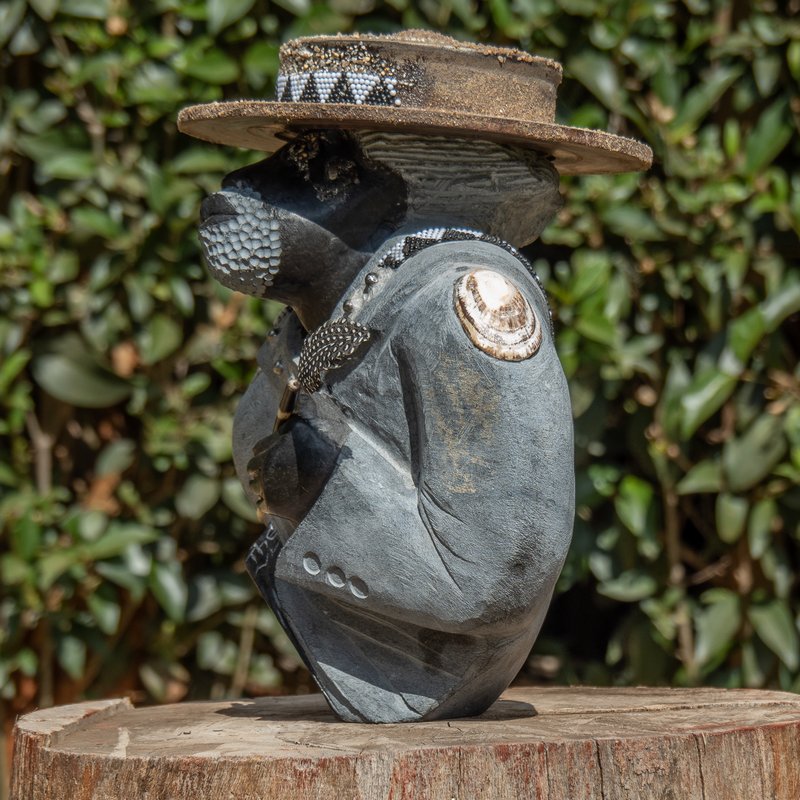

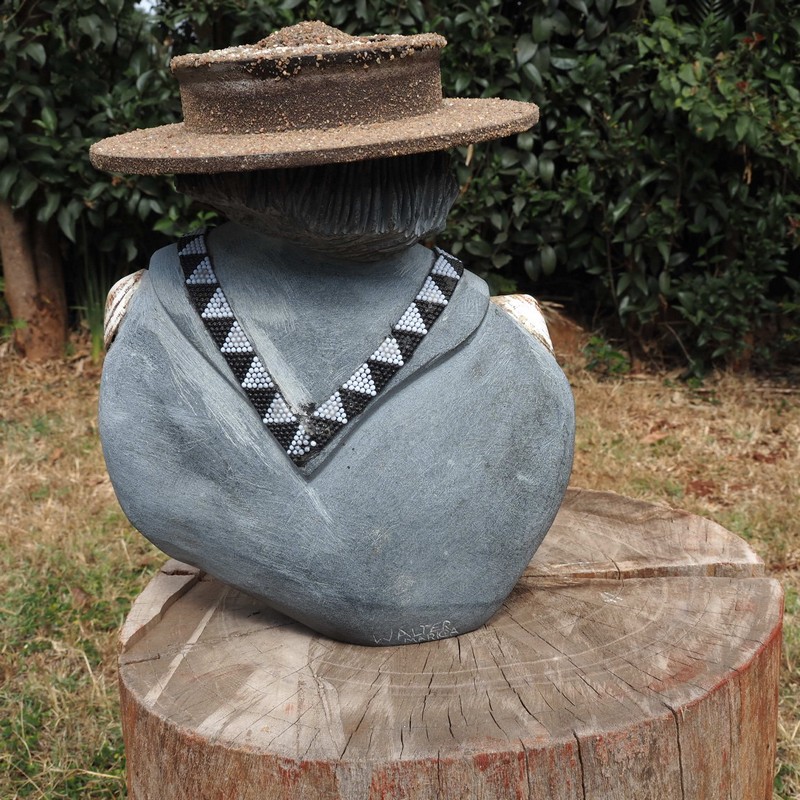

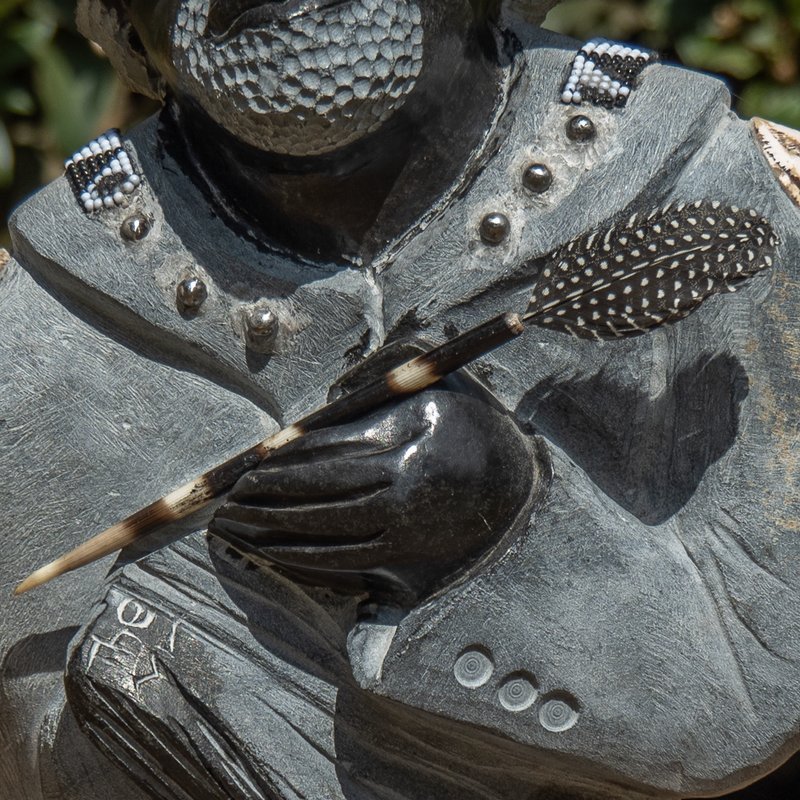
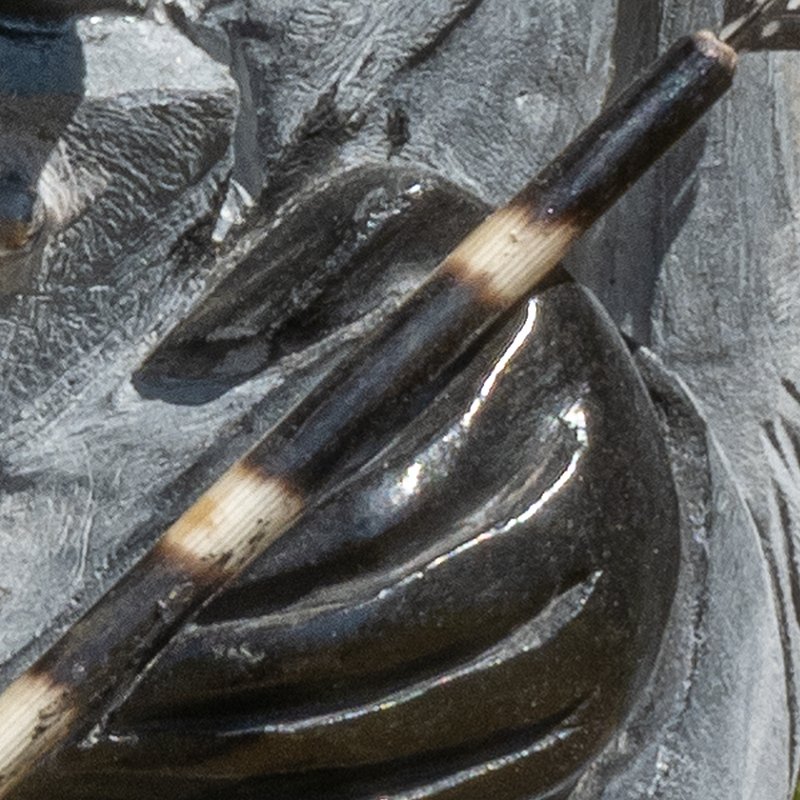
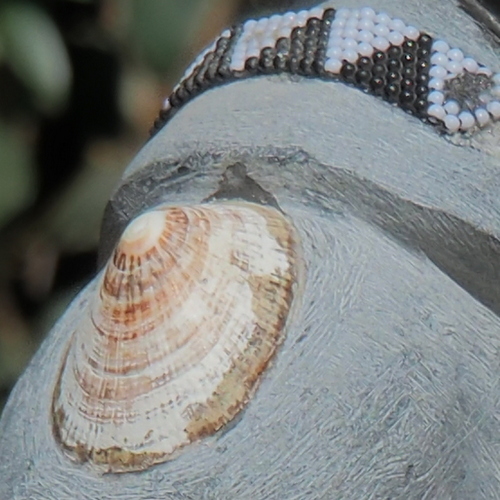
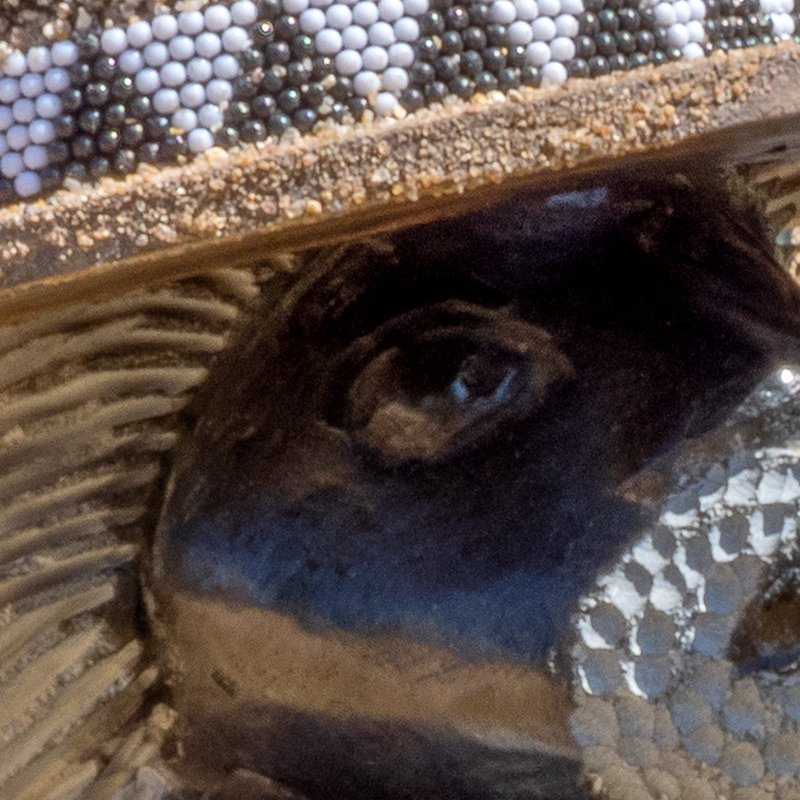
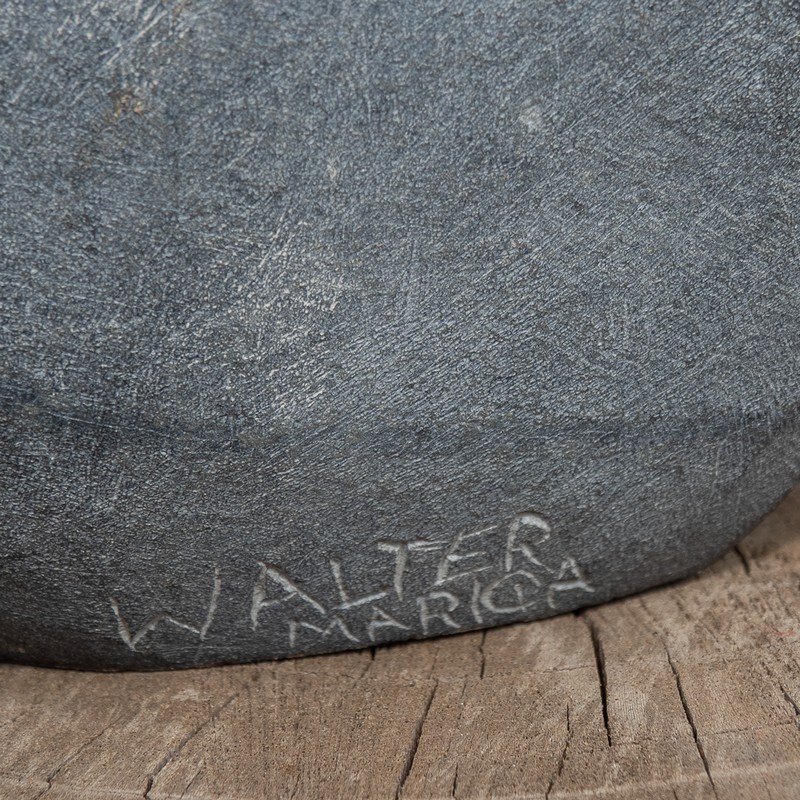
Can you tell us some more about what inspired The Mediator?
Melton Prior has a connection with Zimbabwe. He was in southern Africa at end of the nineteenth century and reported on the Matabele ‘uprising’ near Bulawayo of 1896. Because of his visit to Africa, especially to my country: that inspired me to choose him as my monument in the 50 Monuments in 50 Voices project.
I have called the sculpture The Mediator because of Prior’s participation in the Matabele ‘uprising’ and thinking about the role of his writings and reports during this event.
What do you want people who see this artwork to experience?
I would like people to see how I incorporated different materials and joined them to create one meaningful and beautiful piece of art. Many artists find it difficult to put different materials together, but I just want to inspire others to make an artifact composed of more materials but bringing out a unified theme.
And I hope people will see the way it seeks to convey the true image and character of Melton Prior.
I think people will come here with their different readings, different backgrounds, and inferring different meanings to it, you know. So it’s very much not a case of prescribing to people how they should read my work or how they should see my work. But I’m hoping that it will open up a lot of conversations.
It will also, perhaps, point people in a direction that they were not looking before, to look at contemporary art that is coming out of Africa: from Zimbabwe and also, say, from Nigeria, from Edo State, from Benin City – and how that art interacts in conversation with what is happening globally, as well as what is happening in London or England in particular, you know.
So, and especially in the whole conversation about restitution, I hope that this kind of leads people and holds their hand into it as much as possible.
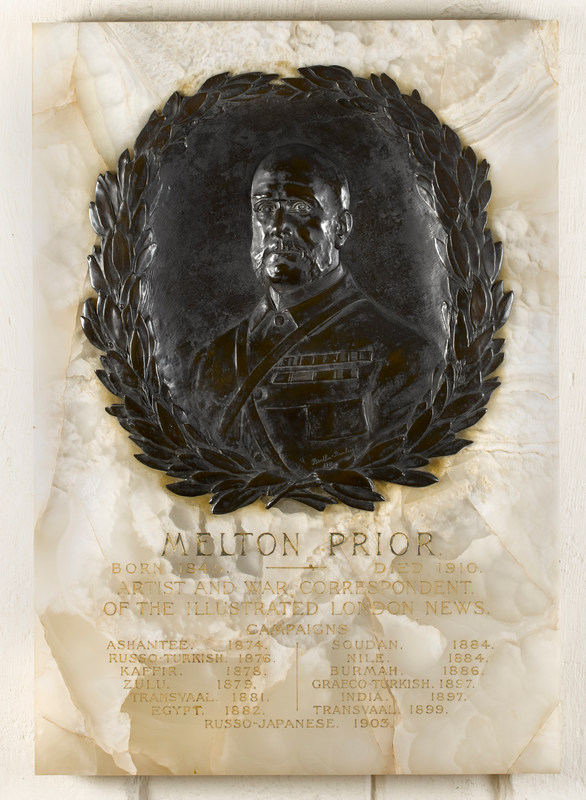

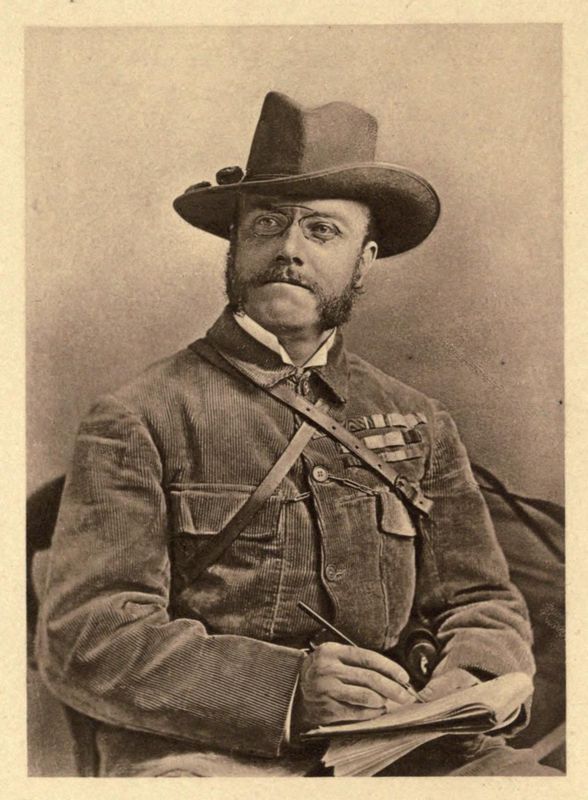
About Walter Mariga
Zimbabwean Sculptor Walter Mariga grew up in a family of artists: his father, the late Joram Mariga, is considered one of the ‘fathers’ of twentieth-century Shona sculpture, and his mother Maud Mariga was among the first women to gain renown as a sculptor in the Shona tradition. Walter began learning to carve stone at the age of 12, apprenticed to his father, and was working full-time as a sculptor by the age of 17. He has exhibited internationally since 1994, when he was selected to participate in a workshop organised by the government of Japan, providing him with a valuable opportunity to sculpt black granite alongside Japanese master sculptor Masaji Asaga.
Through the Gallerie de Porcherie in Tilburg, Holland, Walter has conducted a number of workshops since 2005. He also led workshops for all ages and skill levels during his residency with ZimArt in Canada in 2015.
Walter works from his studio in Harare. Visit his website.
About the Monument
The monument to Melton Prior (1845–1910), the Illustrated London News’ most famous war correspondent and artist consists of a bronze relief bust set on a beautiful, translucent onyx tablet. One of the few monuments in St Paul’s Cathedral by a female artist, it was created by Bertha Burleigh (c. 1872–1934), an Anglo-Belgian artist born in Warsaw. She was the third wife of Bennet Burleigh (1840–1914), who lived a very colourful life before becoming a war correspondent like Prior. The two men were both celebrities of their day, reporting from the midst of ‘campaigns’ across the British Empire, as listed on Prior’s memorial. They often worked alongside each other and held each other in esteem and affection.
For her portrait of Prior, Burleigh referred to the iconic photographic portrait of Prior used as the frontispiece to his memoirs Campaigns of a War Correspondent, published posthumously (1912). She emphasised the two prominent medal ribbon bars and smartened up the tailoring of his jacket, whilst retaining the leather straps; and she removed his spectacles and the notebook and pen, the symbols of his trade, as it were: all in all, giving the portrait a more militaristic appearance. Gone too is his characteristic hat, laying bare the pate that lent him his nickname ‘the screeching billiard ball’. Instead of the aura of acuity and energy in the photograph, taken in his prime, there is a tiredness behind the far-seeing, older eyes.
Burleigh would perhaps have gone on to create a similar monument to her husband, to join the cluster of monuments to imperial journalists in the crypt of St Paul’s Cathedral, but he died just before the outbreak of the First World War; the time of derring-do reportage was over and Bennet Burleigh forgotten as Britain was confronted with a new kind of warfare. This was also brought close to home for Bertha Burleigh: her daughter, also Bertha, worked as an undercover journalist in Belgium following its invasion in 1914, and of her four sons, three were killed in the war.
